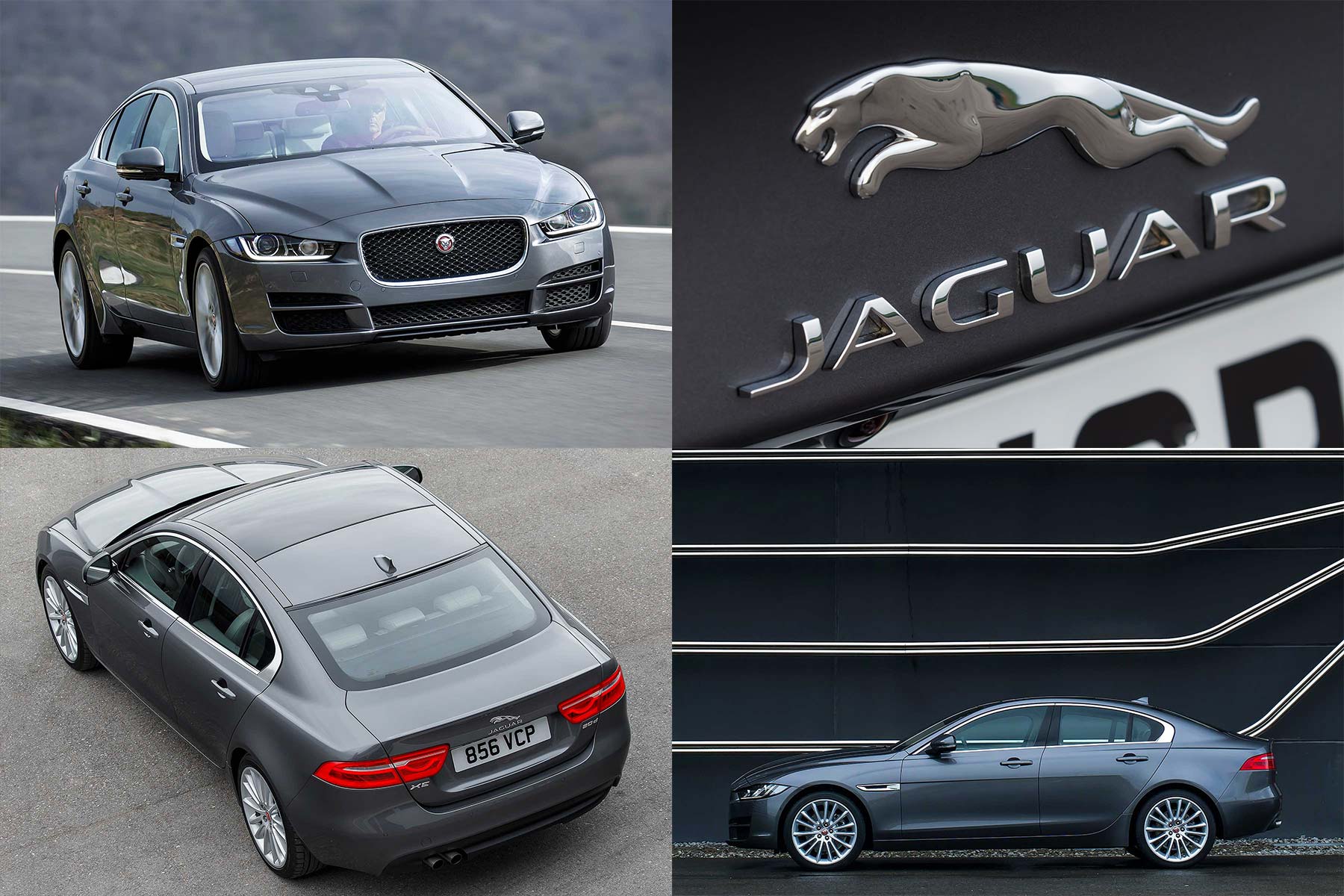 Jaguar vs BMW: it’s now a thing. Because the British-built Jaguar XE delivers, and how. It’s good enough to trade blows with the 3 Series. It might just now be the class-leader.
Jaguar vs BMW: it’s now a thing. Because the British-built Jaguar XE delivers, and how. It’s good enough to trade blows with the 3 Series. It might just now be the class-leader.
Richard Aucock | April 2015
The Jaguar XE should be the car that strikes fear into the 3 Series. And if there’s one variant that BMW should be particularly anxious about, it’s this one: the high-volume 2.0-litre turbodiesel, in optimum 180hp guise. For if Jaguar gets this one right, BMW really has got a fight on its hands. Game on, then.
Since we last drove the XE, Jaguar’s been busy polishing all the areas it promised to: engine refinement and interior finish in particular. Shorn of its prototype stickers and now fully on show to the world, the XE certainly looks interesting. Now we’ve got used to the fact it’s not going to be a styling revolution (nor did it ever need to be), it’s possible to appreciate the design for what it is.
Namely, a saloon car with alternative proportions to the three-box norm – the roofline really is coupe-like, window graphics bold and, in elegantly-formed aluminium and steel, body detailing simple and well judged. The stance is muscular, confident, more haunched and sporty than we’re used to in this sector, and people will like it when they see it on the road.
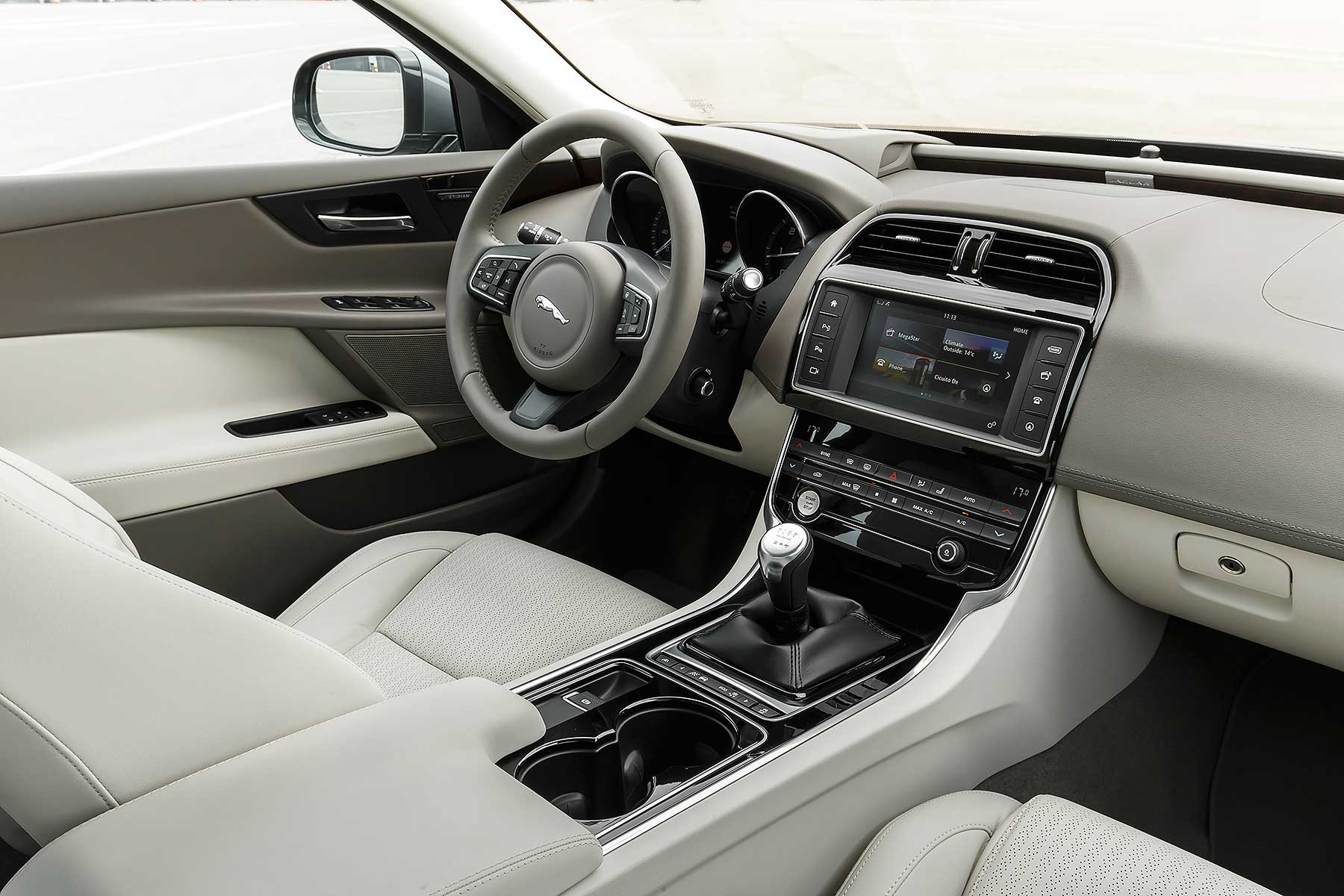
The interior was the bit we were worried about. Lacking its production-spec finishes, we felt it looked a bit plain. Panic over. Again, it’s different to the sector norm, purposefully with a more cockpit-like feel and cocooned sensation – you get this from the super-low seats (even dropping down so low when you get in feels good), the high centre console and the way the concave door panels seem to wrap you within it.
And the finish evident throughout, in the mid-range sporty-spec R-Sport, is impressive: the double-stitched dashtop, lustrous piano black centre console, precise aluminium detailing and even the fact it ‘sounds’ solid when you tap it (unlike the hollow rattle you get in a Mercedes-Benz C-Class) is reassuring. It looks premium, it’s a match for the 3 Series, Jaguar has achieved what it promised to.
The car we tested was, intentionally, a business user’s dream spec. The 2.0d 180 R-Sport retails at £33,025, emits 109g/km CO2, has touchscreen sat nav, cruise control and HID headlights as standard and even includes must-have 18-inch wheels. Add on must-have metallic paint and, for less than £34,000, you’ve a great-looking car that feels good to sit in and could topple the five-star 3 Series. Does it?
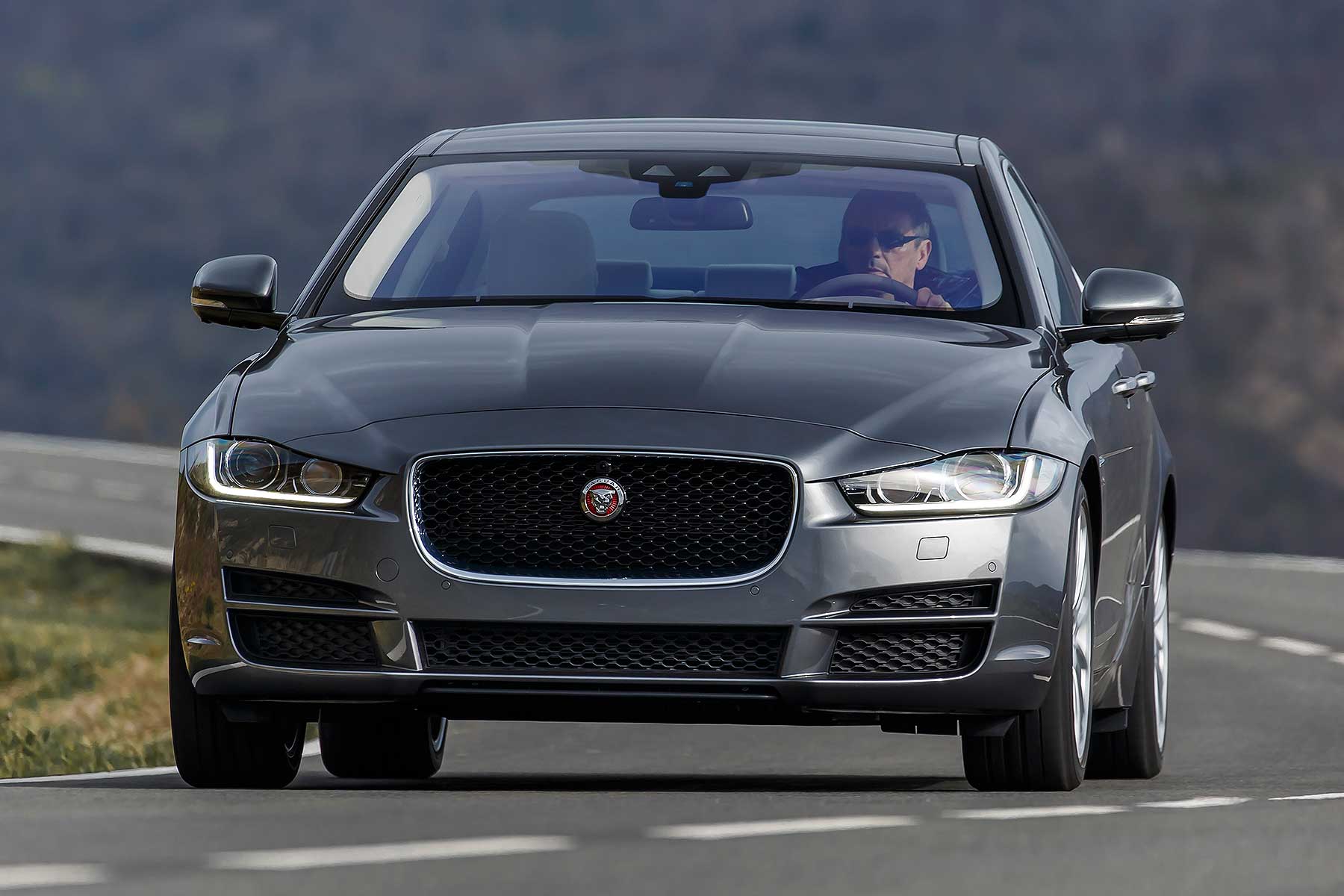
What’s the Jaguar XE 2.0d 180 like to drive?
Not a single excuse is needed. The XE delivers. It’s a great drive, with depth and ability across the board, has a front-running diesel engine, a modern-era infotainment system and plenty of surprise discoveries that delight and satisfy in equal measure.
The engine first: with the prototype, we were worried that, while smooth, it was maybe a bit too vocal and gruff. It’s cured here: apart from a bit of tickover shimmy, the all-new engine is very refined and easily a match for the new 2.0-litre diesel in the BMW; as such, it also topples Audi’s 2.0-litre TDI and the clattery, aged 2.1-litre Bluetec in the Mercedes-Benz. It revs particularly sweetly, with little diesel drone, and step-on response to the accelerator is both swift and smooth. We’re pleased to report how cultured and sweet it is.
It’s quick, posting 0-62mph in 7.4 seconds, and 317lb ft of torque gives it guts. It blends particularly well with the smooth, satisfying eight-speed auto option, but also works nicely with the six-speed manual, the same ZF gearbox as used by BMW. With a meaty clutch, positive action and mechanical feel, the stubby lever’s action will please the enthusiasts.
As will the handling. We expected it to be good; with an ultra-rigid body, F-Type-stiff aluminium suspension pickup mounts, double wishbone front suspension and Integral Link rear, it exceeds even our heavily 3 Series-influenced expectations.
Handling is agile, confident, precise, full of bite when you press hard. It seems analogue, rather than force-fed; the harder you push, the more it gives back, in a linear and predictable way. Lean hard on it and it’s beautifully balanced; prefer fingertips and it flows with inch-perfect accuracy.
This is despite the steering being Jaguar’s first EPAS electric assistance setup – but you’d barely believe it from the on-centre feel, the precision and delicacy, the fact weighting is consistent and never feels like you’re steering through two opposing magnets doing strange and unpredictable things to the assistance. It also weightens consistently and naturally in dynamic mode.
The drive is complemented by a ride quality that surely leads the class. Even the standard passive-suspension car (adaptive suspension is optional) has a fluid, flowing ride but with proper control and not a hint of float when you’re chucking it about with commitment. We’re writing this and we still don’t know how Jaguar’s achieved what it has done with the ride.
We drove across ugly-looking broken surfaces at speed, yet didn’t feel a trace of excessive harshness or noise. Across fast B-roads, it remained poised and tightly controlled, but without the stiffly-sprung jitters you get in the more focused 3 Series. It was marvelously measured and flowing on the motorway, but nicely roll-free and responsive on bends. Thank the expensive suspension hardware, says Jaguar. Thank a magnificent amount of expertise in setting it up like this, we say.
But most important of all is the overall feel of the drive: it’s premium, expensive, benefits from high-level engineering and is far from mainstream. The XE feels special to drive, feels like you’d hope a baby Jaguar would – feels like a genuine, closely-matched BMW 3 Series rival, in fact. We can think of no higher praise.
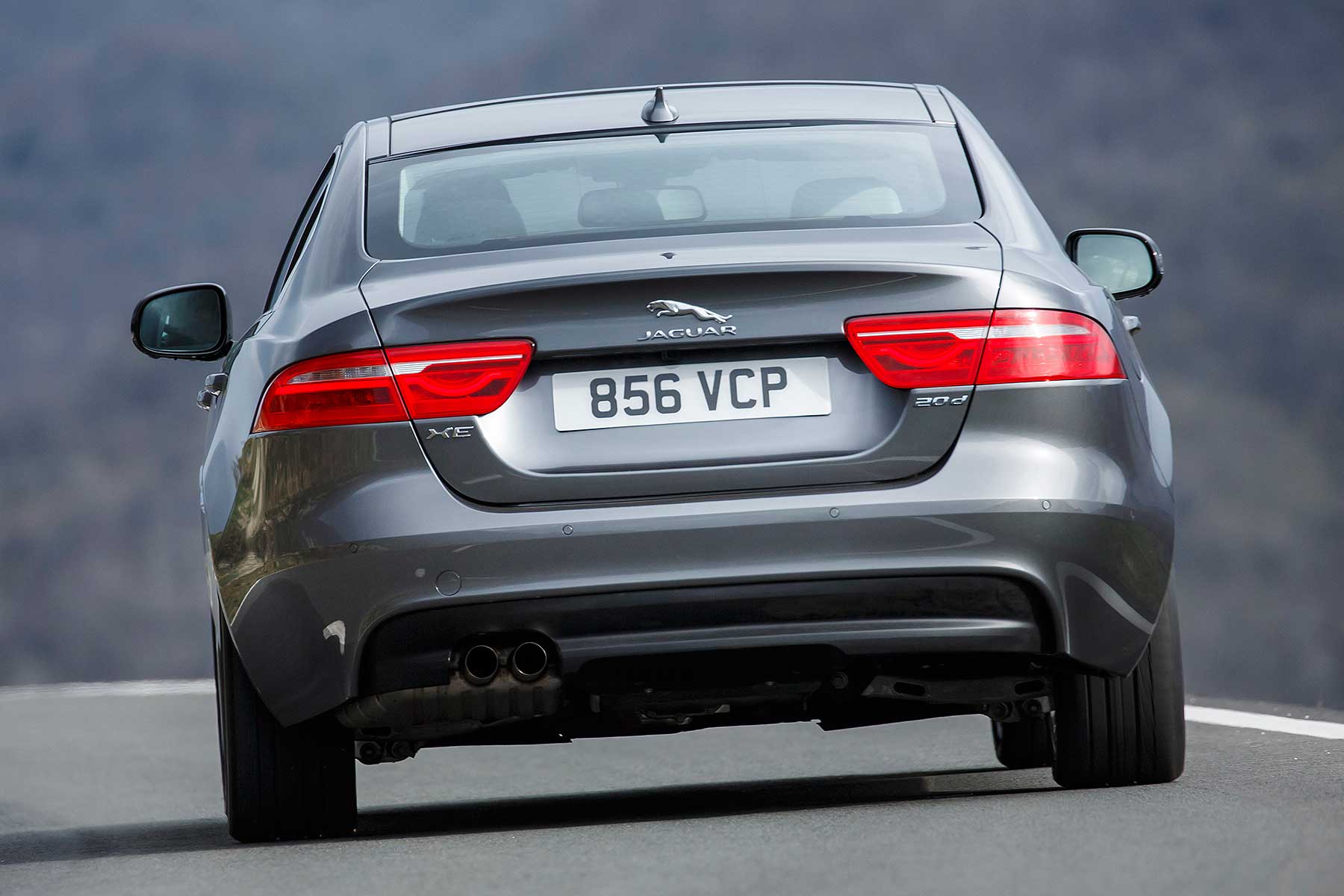
Does the Jaguar XE 2.0d 180 beat the BMW 320d?
Has Jaguar really been able to do what no other member of the establishment has done, and topple the mighty BMW 3 Series? We believe it may well have done. And, as long-time current-shape 3 Series loyalists, we’re both amazed and delighted to be saying this.
It’s not just the drive, although obviously that’s a major factor – particularly the way Jaguar’s delivered pleasing, driver-focused handling with step-up ride quality over the 3 Series that offers more suppleness with no less control. It’ll take a back-to-back to make the final call, but these two drivers’ cars are neck and neck for which pleases drivers the most; they’re certainly well ahead of any competitor.
The diesel engine is, to our relief, thoroughly on the money, which it had to be given the improvements BMW’s found in its new generation 2.0-litre 190hp unit. Again, both are clear of the competition here (Mercedes-Benz needs to take a serious look at that oil-burner of its, and soon).
But then there’s the other important parts that make up car ownership. Styling: the Jaguar is the better-looking car and, once you’re familiar with it and see them side-by-side, we’re sure you’ll agree. The proportions are more pleasing, the shape and surfaces are more interesting and, well, it’s something different in a sector that’s traditionally rather conservative – without, crucially, being too different.
They’re neck and neck on interiors, and maybe the BMW’s got a bit more space, maybe its infotainment system is a bit more well-rounded (although we understand Jaguar has plans here – think InControl Touch Pro…). The Jaguar’s a nice place to be though, and has Germanic substance combined with British warmth – it’s a welcoming, pleasant place to be that, again thanks to the proportions and layout, feels different and unique.
The twin test between them is going to be fascinating but, if we had to make a call right now, we’d give it to the Jaguar. The drive is more rounded, the engine blends performance, refinement and economy very well, it’s nice inside and the shape really is growing on us.
There are two provisos: one, in a few weeks, BMW will have a facelifted 3 Series on show. Two, we need to get them back-to-back in the UK to decide which really is the best compact executive you can buy. But the fact it’s between the BMW and the Jaguar says it all: that’s how much Jaguar has achieved with the new XE.
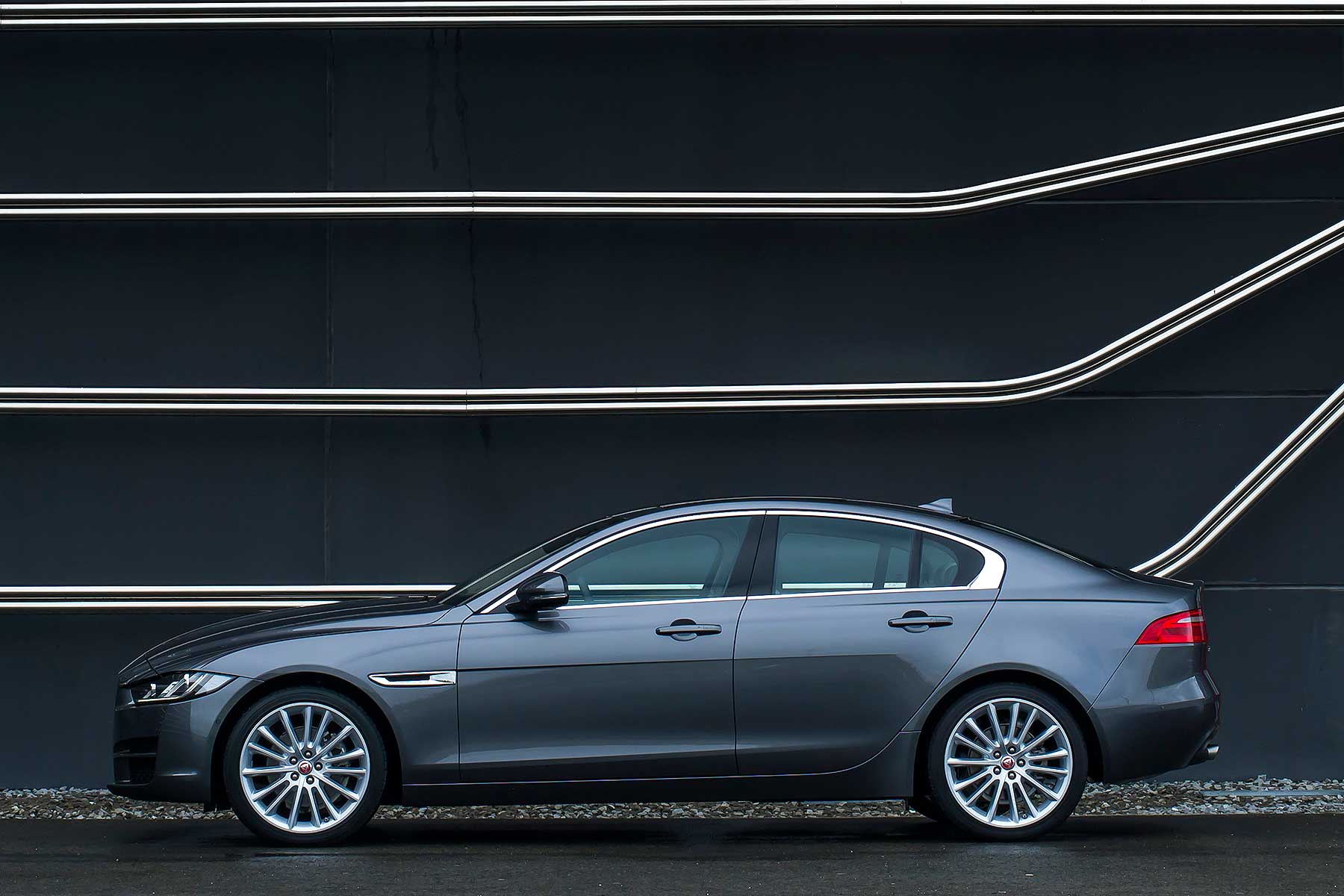
Verdict: Jaguar XE 2.0d 180 (2015)
Jaguar’s done it. Jaguar’s delivered a genuinely competitive compact exexutive car. Jaguar’s done what Lexus and Infiniti have failed to do, and taken on the mighty three German brands, on equal footing.
We reckon the XE is so good, it’s already beaten the Audi A4 and Mercedes-Benz C-Class. That’s how good it is. And it’s the fact we’re now wondering just who’s going to come out ahead when it meets the BMW 3 Series that tells you what a great car the XE is.
Jaguar vs. BMW: the fight is on.
Rivals: Jaguar XE 2.0d 180 (2015)
- BMW 3 Series
- Mercedes-Benz C-Class
- Audi A4
- Lexus IS
- Infiniti Q50
The BMW has been the five-star class act in this sector ever since its launch. It’s way ahead of the others, most significantly the dated Audi A4 (due for replacement at the 2015 Frankfurt Motor Show). Even the all-new Mercedes-Benz C-Class couldn’t topple it. Jaguar also sees the Lexus IS as a rival, but not the Infiniti Q50: neither do we, really.
Specification: Jaguar XE 2.0d 180 (2015)
Engine 2.0-litre turbodiesel four-cylinder
Gearbox Six-speed manual, rear-wheel drive
Price from £30,275 (R-Sport as tested: £33,025)
Power 180hp
Torque 317lb ft (430Nm)
0-62mph 7.4 seconds
Top speed 140mph
MPG 67.3mpg
CO2 109g/km